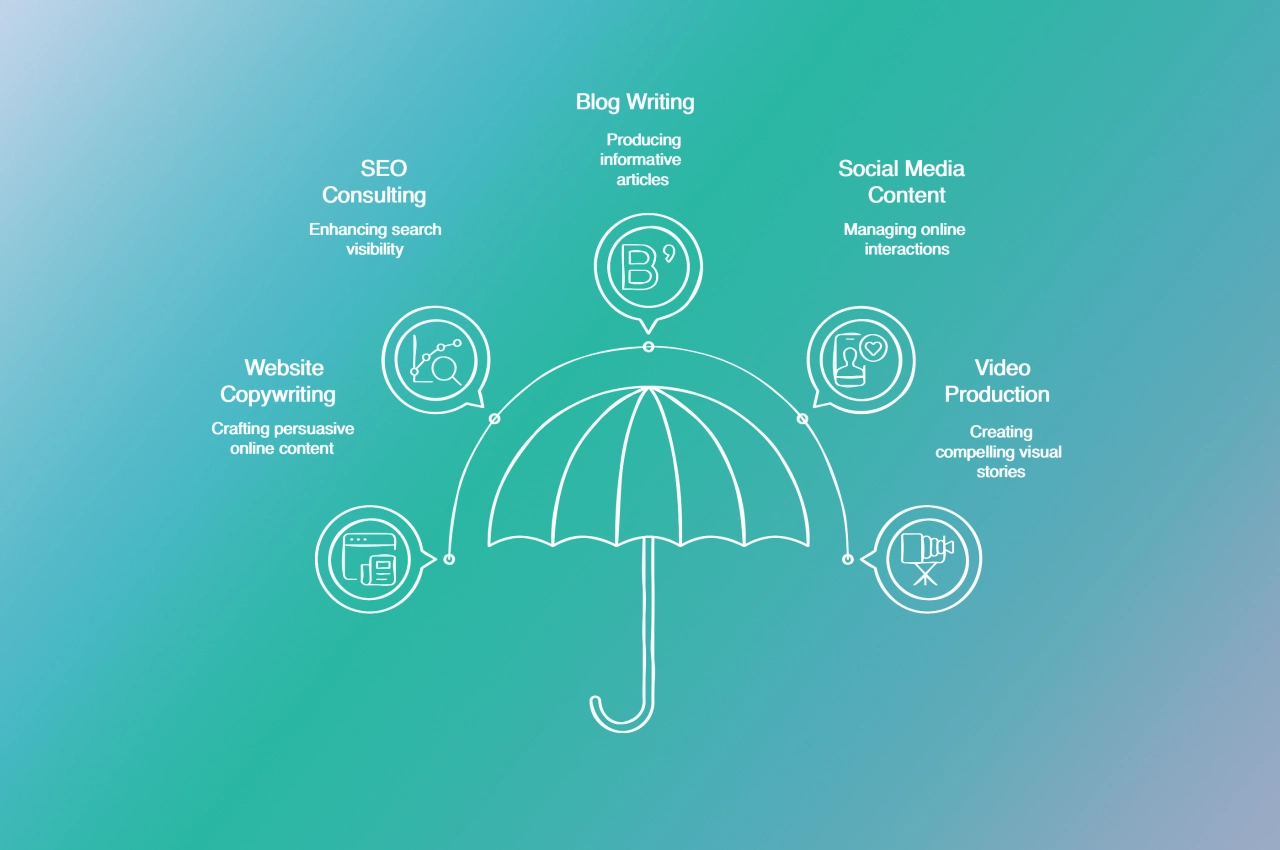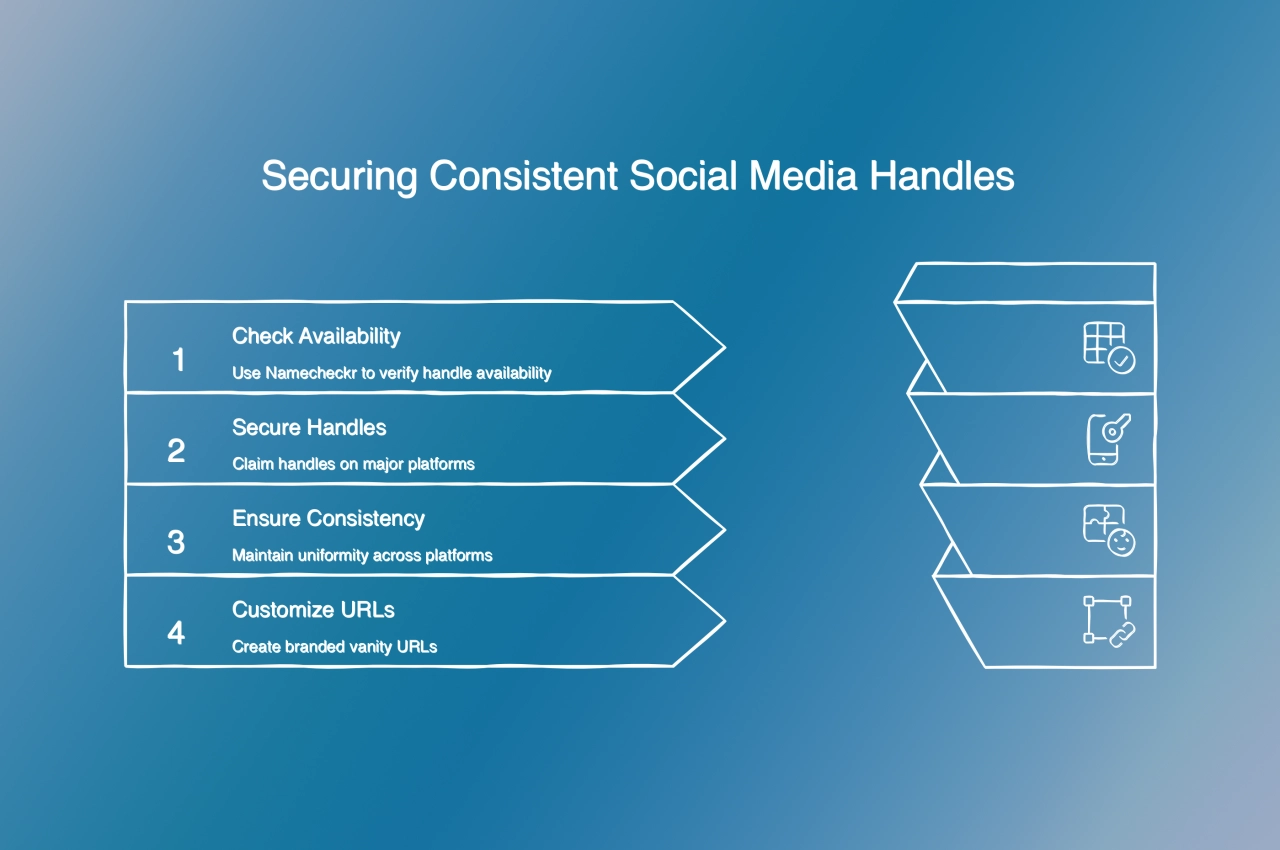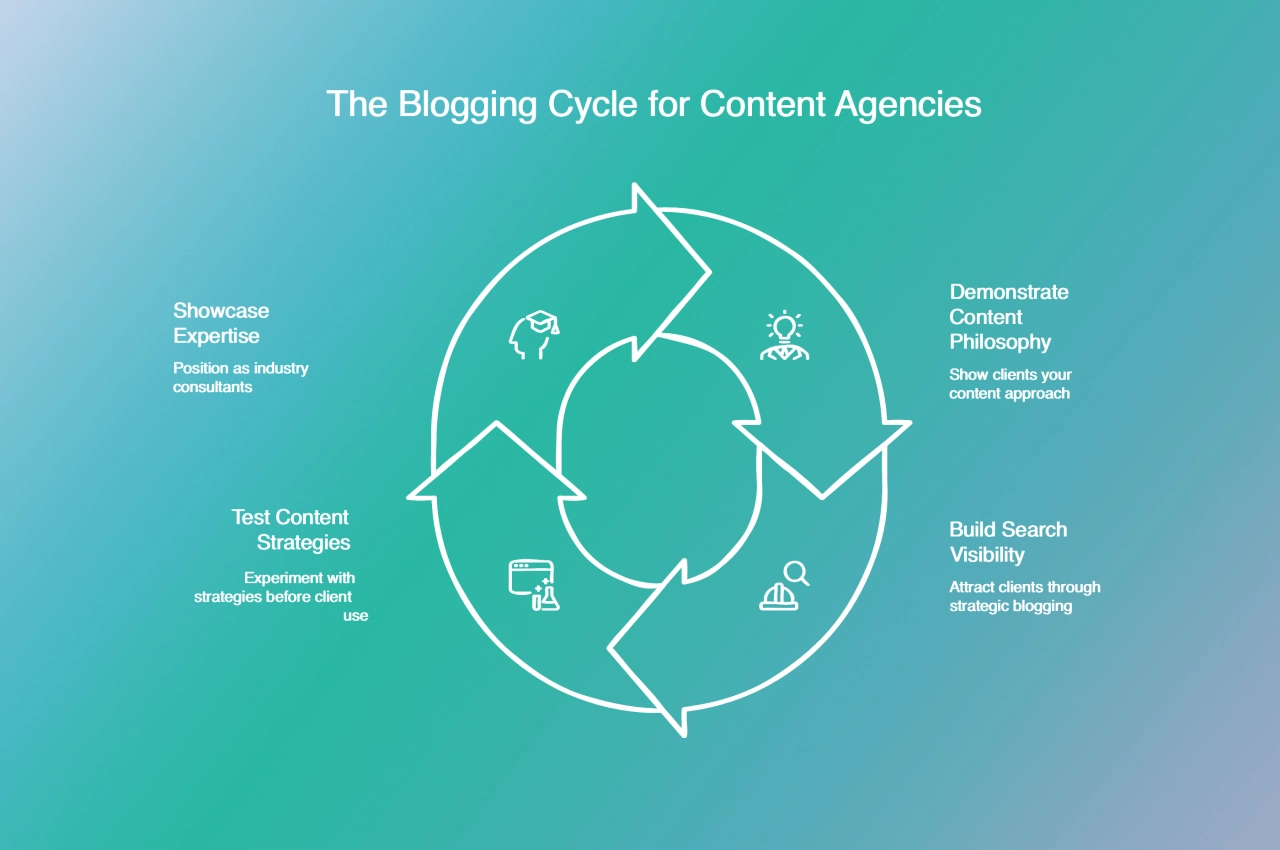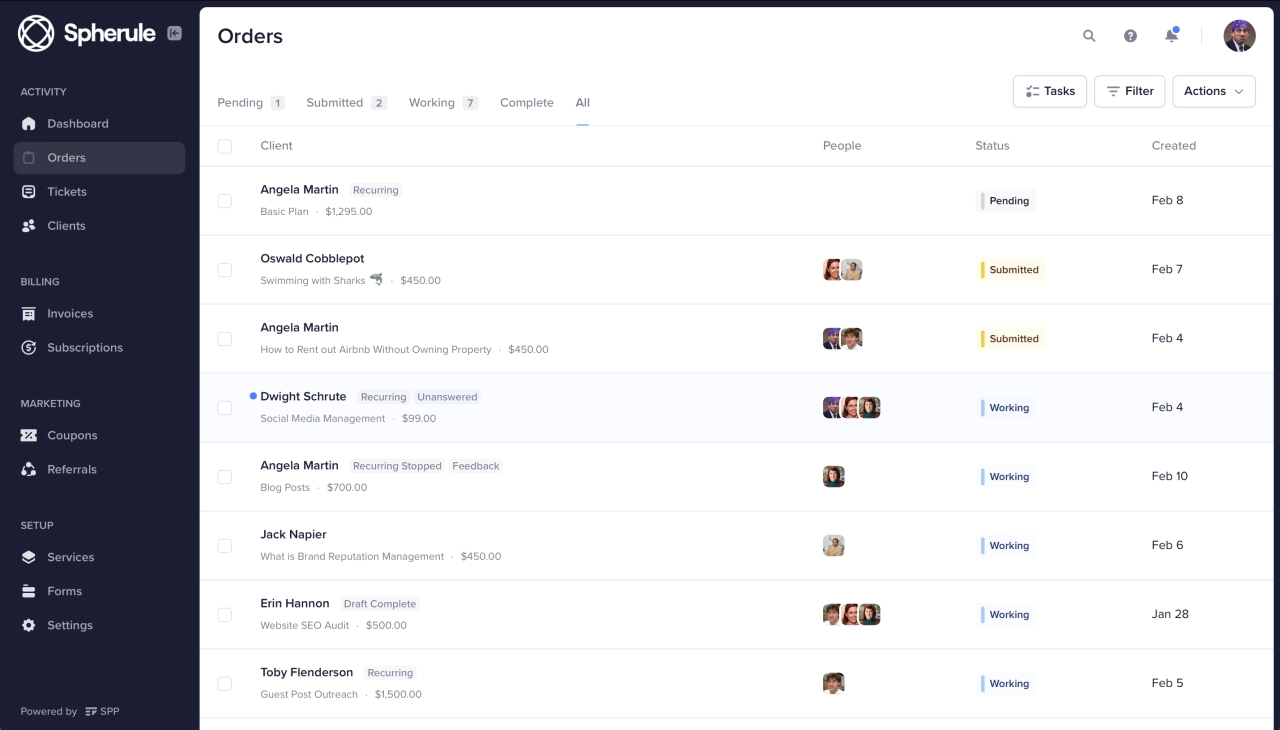- Researching your niche and identifying potential clients is crucial before starting a content creation agency.
- Building a team of experts in content creation, marketing, and sales can help grow your agency.
- Offering a unique value proposition and pricing structure can set your agency apart from competitors.
Despite the ebbs and flows of the current marketing landscape, content marketing remains one of the most cost-efficient, measurable, and impactful marketing channels. So if you’re thinking of starting your own agency with a focus on content creation, this might be the time to do it.
Whether you’re a seasoned freelancer in content creation or relatively new to the industry, starting a content creation agency won’t be easy. It won’t be an insurmountable challenge, either. The demand for content is high, but the number of freelancers and agencies offering content services is rising every day. If you want to start a content creation agency, you’ll want to make sure you stand out from the crowd.
But how do you start a content creation agency that leaves competition in the rearview mirror and stands the test of time?
Here’s a guide to help you out.
What does a content creation company do?
A content creation company provides content marketing services, including website copywriting, SEO consulting, blog writing, social media content, video production, and other related services. These services are used by businesses to create valuable content that helps them acquire and retain customers while also increasing their visibility in search engine rankings, as well as their awareness in the industry.
Your content creation agency can either offer end-to-end services related to content marketing or focus on a specific niche. For example, you might want to focus on lead generation copywriting for SaaS businesses, social media management for fitness brands, SEO content writing services for lawyers, or video production for startups.

Regardless of the services you decide to offer, it is important to make sure that you are providing top-notch content that is engaging, informative, and adds value to the customer’s experience.
Branding & naming: Create recognition from day one
Choosing a name for your content creation agency isn’t just a creative exercise—it’s a strategic business decision that impacts everything from client perception to your ability to stand out in a crowded market.
Finding a name that sticks
Your agency name needs to do heavy lifting: it should communicate your specialty, reflect your values, and be memorable enough that potential clients don’t forget it five minutes after reading it.
Forget generic options like “Quality Content Solutions” or “Premium Writing Services.” These bland choices disappear into the background noise of similar-sounding competitors.
Instead, consider names that:
hint at your content specialty (e.g., “Conversion Copy Magicians” for sales-focused content)
reflect your unique process or approach (e.g., “StoryDriven” for narrative-focused content)
use unexpected word combinations that create curiosity (e.g., “Syllable & Strategy”)
The best agency names create immediate questions or interest. When someone hears “Atomic Content,” they might wonder what makes your content “atomic”—giving you the perfect opening to explain your approach to creating small, powerful content pieces that drive big results.
Test potential names on friends and even strangers. If they need you to repeat it or spell it multiple times, keep looking. A name that requires explanation before you’ve even started pitching your services puts you at an immediate disadvantage.
Domain name reality check
In 2025, finding an available .com domain that matches your business name perfectly can feel like searching for a unicorn. But before you settle for awkward alternatives like getatomiccontent.com or atomic-content-agency.com, consider these approaches:
use industry-specific extensions like .media, .digital, or .studio
add a relevant word to your name (e.g., atomiccontentstudio.com)
consider .co or .io domains, which have gained legitimacy in creative industries
Whatever you do, avoid hyphens, numbers, or deliberately misspelled words in your domain. These create friction when someone tries to find you online after hearing your name mentioned.
Before finalizing any name, check domain availability using a registrar like Namecheap or GoDaddy. If the perfect domain is taken but shows no active website, consider reaching out to the owner with an offer to purchase it—sometimes a few hundred dollars can secure your ideal online address.
Stake your social claim early
Even if you’re not planning to be active on social media immediately, secure your handles across all major platforms the moment you settle on a name. Use a tool like Namecheckr to verify availability across multiple platforms simultaneously.
Aim for consistency across platforms—changing your handle from @AtomicContent on X to @AtomicContentAgency on Instagram creates unnecessary confusion. If your exact name isn’t available on a platform, try adding “HQ,” “team,” or “agency” consistently across all affected platforms.

Remember that some platforms allow you to claim your business name as a custom URL after reaching a certain follower threshold. Facebook and LinkedIn, in particular, let you create branded pages with vanity URLs once you’ve established a presence.
Legal protection: don’t skip this step
Nothing derails a growing agency faster than a cease-and-desist letter from a business with a similar name. Before investing in branding assets or building recognition, perform these essential checks:
search the USPTO trademark database (uspto.gov) to verify no existing trademarks conflict with your chosen name
run a Google search for businesses using similar names, especially in related industries
check your state’s business registration database for local conflicts
consider consulting with a trademark attorney if you’re serious about long-term growth
Many content creators skip this step, only to face painful rebranding later when they discover their chosen name conflicts with an existing business. A few hours of research now can save months of damage control later.
If your name passes these checks and you’re committed to it for the long run, consider filing for trademark protection once you’ve been operating for a few months. While not essential for small agencies, this protection becomes increasingly valuable as your reputation grows.
How to start a content creation agency in 6 steps
OK, let’s say your mind is set on building a content creation agency. Here’s where to start.
1. Define value proposition
If you search for “content marketing” on LinkedIn and apply the “companies” filter, the platform will give you more than 223,000 results. Of course, not all of these are content marketing agencies—but then again, not all content marketing agencies are on LinkedIn. The idea here is that there are a lot of businesses offering services in the content marketing space. If you want yours to succeed, you first need to make sure that your services stand out.
Colors, a catchy tagline, and even a posh-looking website can help with that. However, your logo or website’s homepage won’t be effective if you don’t define your value proposition first.

Your value proposition is the promise of what you can offer to prospects, customers, and partners. It is essentially the reason why a customer should pick your agency over someone else’s; the thing that makes you unique and lies at the foundation of growing your business.
Here are some essentials to keep in mind when defining your value proposition.
Understand the basics of a value proposition
A value proposition is a simple statement that defines what you provide to your customers, and what goals they can achieve. It should be specific, unique, and compelling—but also brief. You want people to remember it and understand it without getting bogged down in details. Essentially, when someone reads your unique selling proposition, they should smile/laugh or have an ”Aha!” moment.
Most businesses focus on just the primary value proposition (who we are, what we do, who we do it for, and why). However, if you want to get down to the nitty-gritty and nail who your agency is, who it serves, and what kind of value it provides, also consider your:
prospect-level value proposition (why different buyer personas should choose you over anyone else)
product-level value proposition (why your different services and products are unique)
process-level value proposition (what sets you apart from competitors in terms of the customer experience)
Choose your market wisely
As mentioned before, there are a ton of content creation agencies out there. To ensure that you’re successful, it’s important to choose the right market and niche for your agency.

Ask yourself:
What industries or verticals do we have the most expertise and experience in?
Who are our ideal customers? What are their pain points, needs, and goals?
What sets us apart from other content creation agencies? What unique value do we bring to the table?
Who are our biggest competitors and how can we differentiate ourselves from them?
What types of content and channels are most effective for reaching and engaging our target audience?
Don’t try to be everywhere
Content is a huge thing. Basically, everything you see online is content. Unless you have a solid base of clients for every channel and a massive team to support creating content for everything, it’s best to focus on a few channels and master them.
For example, if you’re good at creating visual content like graphics or video animations, then focus on that. Or, if you’re better at short-form videos, focus on TikTok and YouTube reels. And if you’re best at creating unique written resources for businesses, like case studies, for example—then do that.
Trying to be everywhere will get you nowhere.
Focus on the customer’s benefits
Your value proposition isn’t about you. It’s about what you can do for the customer. So when crafting your content marketing agency value proposition, keep in mind that it should be focused more on the customer’s benefits, rather than what you do per se.
Show, don’t tell
You obviously shouldn’t exaggerate the benefit of your services. Still, emphasizing the benefits of using your services/products can help you stand out from the competition.
For example, instead of saying, “we create high-quality content”, you could say, “our content has boosted client sales on average by 65%.” This shows that you’re not only confident in your content creation abilities but that you also understand the customer’s needs and goals.
2. Calculate pricing and revenue structure
Once you have your value proposition defined and you know the target market, it’s time to create your pricing and revenue structure.
Here are the steps you should take to calculate pricing and revenue structure for your SEO content agency.
Assess your costs
Before you set your prices, assess how much it costs to actually run your agency. Take the following into consideration:
price for content (freelancers, in-house employees)
other types of in-house employees
the software you will be using
marketing expenses (you do need to run marketing for your agency)
any equipment you and your employees may need
costs for rent and utilities (if you have a physical office)
business registration and other legal costs
Determine your revenue structure
Your revenue structure is the specific model you will choose for your agency. For instance, some agencies charge on a project-based model, whereas others charge on a retainer model, and others choose a hybrid between the two. Furthermore, some agencies settle for a subscription-based model that puts an emphasis on customer self-service.
Our aim was to grow our recurring business as much as possible but at the same time make it easy for customers to test us out without a big commitment. This lends itself well to one-time services that have a clear path to a recurring offering. Most of our one-time services therefore have a recurring version for customers who've tested us and like our offering. We priced our recurring services a little cheaper than our one-time offers to encourage customers to sign up to monthly plans.
 Mark Whitman,
Contentellect
Mark Whitman,
Contentellect
All revenue structures have advantages and disadvantages. Yet, if we had to narrow it down to the absolute essentials, project-based models are better for short-term projects, whereas retainers are better for long-term relationships. And since we like productized services so much, the subscription-based model is the way to go in the future. Especially with our credits module, there are many ways to make ordering content easier for your clients.
Evaluate profitability
How much do you need to charge to be profitable? Calculate the cost of producing content and add a markup that fits your margin goals. Also, be sure to evaluate profitability on an ongoing basis, as revenues and costs can change over time.
Set your pricing
Now that you have all the information, you can finally set your pricing. You should use a combination of hourly and value-based pricing to determine the final cost for each project.
For example, if you have finished assessing your costs and calculating your margin goals, you could set a base rate for each type of content and then add an additional charge for any extra work beyond the scope. Alternatively, allow your clients to purchase word credits via our credits module. The benefit is that you receive your money upfront, and they can spend their credits as needed.
3. Invest in tools
If you want to be competitive in today’s content marketing landscape, you need to invest in the right tools. Investing in content creation and marketing tools will help you create high-quality content quickly, increase your team’s productivity, and automate some of the manual tasks related to content creation.
Some tools you might want to consider include:
billing, order management, and referral management (SPP)
social media marketing automation tools (Hootsuite, Buffer)
SEO research tools (Ahrefs, Semrush)
content optimization tools (Frase, Writesonic)
reporting tools (MOZ, Databox, Google Analytics)
content scheduling (StoryChief)
tools for targeted email marketing (MailChimp, Klaviyo, Drip)

SPP is fantastic for my content writing agency. It offers an awesome user experience for my customers and team members, plus the feature set is excellent.

Sure, these tools aren’t free, but they’re an investment made in your agency’s profitability, efficiency, and reputation. Work with the best software to make content creation a smooth experience—both on your end and especially on your customers’ end.
4. Hire the right people
You can’t build a business alone, so make sure you hire the right people and build a great team.
If you’re looking to bring on freelancers, be sure to carefully vet each candidate against your company values, mission, and purpose. Run paid tests to assess the quality of their work. Make sure they understand the industry and know how to create great content.
For example, if you want to find ghostwriters for hire, a great approach is to narrow candidates down to a select few and have each one write an article. While paying for trial content pieces may seem like a waste, it will save you money in the long term as you aren’t just relying on writing samples to determine a writer’s ability. Instead, you’re putting their skills to the test in a realistic scenario.
Hiring in-house employees is a different task alltogether. Those looking to build their agency team should focus on finding people with skill sets that bring value to their business. As for freelancers, make sure that they share your company’s mission and purpose. Also, look for real skills, not just certifications and titles—the latter are nice to have, but may not always translate into actionable, productive results.

Remember that, aside from content creation talent, you also need to have someone who can focus on client relations, managing tasks, scheduling projects and deadlines, as well as a content strategist to lead the way.
With the right team in place, you can increase your revenue and continuously improve your agency’s performance. So take your time, invest in the best, and, very importantly, work with people who are a good culture fit for the agency you want to build. The best talent in the world can be wasted on the wrong team.
5. Create a process and automate it
Efficient processes are part of the reason businesses work with agencies in the first place. They don’t have the internal talent, the time, or the energy to dedicate to building content creation processes—so they’re happy to outsource this to a different business.
That means your processes need to be flawless. From client onboarding to maintaining a relationship of continuous collaboration, every step of the process needs to be documented and kept up-to-date.
Meanwhile, by automating some parts of your content creation processes—such as content scheduling or client updates—you can save time, reduce costs, and increase efficiency. This will also allow you to focus on creating higher-quality content while increasing customer satisfaction.
Tools you can use to automate your processes include SPP’s client portal API and webhooks, Zapier, IFTTT, and Autopilot, all of which can help you connect thousands of tools among each other.
6. Evaluate your marketing strategy
Once you have the right people, you’ll need to evaluate your agency’s overall marketing strategy. That means understanding what content works best for your target customers, how often you should reach out to potential clients, and the channels that work best for them.
Remember, when you use content as a growth tool for your own agency, you’re not just running campaigns—you’re also showcasing your capabilities to potential customers.
So make sure you have a content strategy that speaks directly to your target audience, tells compelling stories they can connect with, and focuses on delivering value. Focus on creating the right kind of content for each channel, and use data-driven insights to evaluate your performance.
Finally, don’t forget to track the success of your content so you can learn from it and continuously improve.
By following these strategies, you’ll be well on your way to building a successful content creation agency that produces quality results for both clients and customers alike.
Building your online presence
As a content creation agency, your online presence isn’t just a marketing channel—it’s your living portfolio. The way you present yourself online speaks volumes about what clients can expect from your services. After all, if you can’t create compelling content for your own business, why would anyone trust you with theirs?
Your website: keep it simple but impressive
Your agency website doesn’t need to be a complex, feature-rich platform—especially at launch. What it absolutely must be is professional, clear, and reflective of your content philosophy.
Start with these essentials:
Core pages that convert: Focus on creating just 5-7 high-quality pages to start.
compelling homepage that clearly states what you do and who you serve
services page detailing your offerings with concrete deliverables
work samples/portfolio page showing your best content
about page that tells your story and introduces your team
contact page with multiple ways to reach you
Portfolio organization that makes sense: Unlike design agencies that can show visual work at a glance, content requires thoughtful presentation. Consider organizing your portfolio by content type (blog posts, whitepapers, social media), industry verticals, or content goals (educational, conversion-focused, brand awareness).
Case studies over content samples: Rather than just displaying content you’ve created, frame it within case studies that explain the strategy behind it and the results it achieved. This shifts the conversation from “here’s what we write” to “here’s how our content drives business results.”
Mobile-first design: With the majority of web browsing happening on mobile devices, ensure your site looks flawless on smartphones. Nothing says outdated faster than a website that requires horizontal scrolling on mobile. And worse, you’ll fail Google’s Core Web Vital tests.
For content agencies just starting out, platforms like Webflow or Squarespace with a premium theme offer the right balance of professional appearance and manageable setup. If you’re not design-savvy yourself, this is one area worth investing in professional help. Your website is often your first impression, and in the content business, first impressions are everything.
Your agency blog: the ultimate proof of concept
The irony isn’t lost on me: many content creation agencies neglect their own blogs while telling clients how essential blogging is. This disconnect creates an immediate credibility problem. Your agency blog serves multiple vital functions:
It demonstrates your content philosophy in action: Your blog reveals how you approach content creation—your voice, quality standards, formatting preferences, and topic selection strategy. Clients will assume the content you create for them will follow similar patterns.
It builds search visibility for your agency: A strategic blog targeting industry terms and questions potential clients are searching for creates a steady stream of inbound leads.
It allows you to test content strategies firsthand: Before recommending new content approaches to clients, test them on your own blog first. This gives you real data to support your recommendations and helps you refine processes before client money is on the line.
It showcases your subject matter expertise: Beyond writing skill, clients want to know you understand their industry and marketing challenges. Your blog is where you demonstrate this expertise, positioning your agency as consultants rather than just content producers.

The key to maintaining a consistent blog while juggling client work is realistic planning. Start with a modest cadence—perhaps twice monthly—and create a content calendar at least three months in advance. Involve your entire team in content creation, leveraging each person’s unique expertise.
One practical approach: implement a “client insights” process where team members document interesting challenges, solutions, or observations from their client work (with all identifying information removed). These insights become the seeds for future blog posts, creating a never-ending idea pipeline tied directly to your actual work.
The content ecosystem beyond your website
While your website serves as your online headquarters, your broader digital footprint matters too:
LinkedIn presence: For B2B content agencies, a strong company page and active personal profiles for key team members can generate significant business. Share insights, comment thoughtfully on industry developments, and showcase client successes (with permission). Make sure to make use of your team to spread the content across all profiles.
Email marketing: Start building your email list from day one. Even a simple monthly newsletter sharing your latest content and industry observations keeps you top-of-mind with potential clients and referral sources.
Industry platforms: Identify the publications, forums, and communities where your target clients gather. Strategic guest contributions to these platforms can position your agency as an industry authority faster than content on your own properties.
The most successful content agencies don’t just create content—they build audience assets. Every blog subscriber, newsletter reader, and social follower represents potential future business or referrals. Treat these audiences with the same care you would a paying client.
Summary
The difference between thriving content agencies and those that struggle lies in three fundamentals: assembling the right talent, implementing scalable processes, and continuously evaluating performance against business metrics. Master these elements, and you’ll build an agency that delivers exceptional results for clients while creating sustainable growth for your business.
The content creation industry rewards those who combine creativity with strategic discipline. Follow the framework outlined in this guide, and you'll be positioned to capitalize on a market that shows no signs of slowing down.




